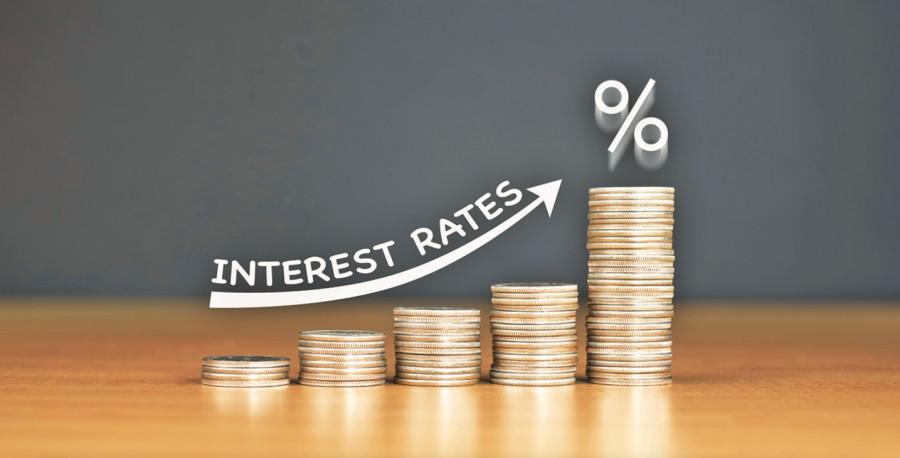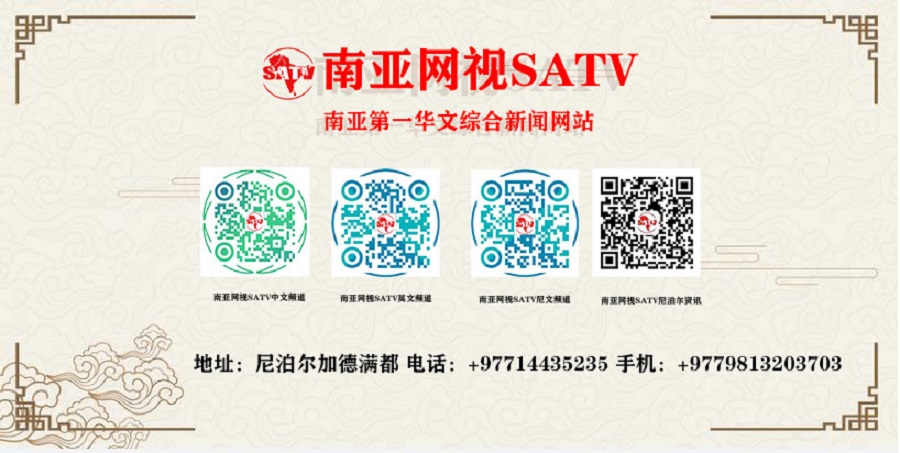
Guru Neupane, a promoter of the Upper Chameliya Hydropower Project, is worried about the potential rise in bank interest rate. In the face of a liquidity crunch, commercial banks are competing to woo depositors, offering high interest rates on deposits. This in turn could lead to a rise in the interest rate on loans as well.
A consortium of banks led by the Himalayan Bank has provided loans to develop this 40MW project which is expected to be completed next year.
“Currently, we are receiving loans at 8.5 percent interest rate from banks,” said Neupane. “The banks have not made an upward revision in the interest rate but we are worried they will do so because of the liquidity crunch.”
He said hydropower developers cannot afford cost overruns because the selling price of electricity is already fixed and they cannot hike the prices citing such overruns.
“In other businesses, the traders can pass the increased cost on to the consumers, but that is not possible in the hydropower business,” said Neupane.
Hydropower developers have to sell power to the Nepal Electricity Authority as per the power purchase agreement signed with the state-owned utility.
Recently, average interest rates on both deposits and credits have gone up.
According to Dev Kumar Dhakal, spokesperson for the Nepal Rastra Bank, the maximum interest rate on credit went up to 11.67 percent recently from around 9.5 percent in the initial days of the current fiscal year 2021-22.
The interest rate on deposits has increased in recent days as banks are seeking extra funds.
For example, the interest rate on fixed deposits has remained between 8-10 percent in the case of almost all commercial banks, according to data available from the Nepal Bankers’ Association.
Even though some banks had raised the rate to over 10 percent on fixed deposits starting October 18, the central bank’s instruction early this week not to increase the interest rate on deposit by more than 10 percent compared to the rate maintained in the previous month, forced such banks to rollback their interest rate offers.
While a higher interest rate on deposits is welcome news for depositors, it makes loans expensive.
“This, in turn, discourages firms from making more investments,” said Keshav Acharya, an economist. “High interest rates also increase the cost of production for firms affecting the competitiveness of their products in the domestic and international markets.”
So keeping interest rates on credit on the lower side is essential for a quick economic recovery after the disastrous impact of the Covid-19 pandemic, according to experts and stakeholders.
The country’s economy suffered a negative growth for the first time in nearly four decades in the fiscal year 2019-20 and the economy is expected to have grown by four percent in the last fiscal year 2020-21. The government has set a target of seven percent growth for the current fiscal year 2021-22.
But the Asian Development Bank in September slashed the growth projection for Nepal’s economy for the current fiscal year to 4.1 percent from earlier 5.1 percent, largely due to high Covid-19 infection and risks and slowed growth in tourism and services. Nepal’s economy is likely to face a setback also because of the huge damage caused to paddy crops by untimely October rains. According to a preliminary estimate of the Ministry of Agriculture and Livestock Development released on Friday, floods and inundation caused loss of 258,092 tonnes of paddy worth Rs7.22 billion in Lumbini, Provinces 1 and Sudurpaschim provinces.
International trade data show that economic activities in the country have increased in the first two months of the current fiscal year. Nepal’s exports grew by 115.43 percent to Rs44 billion while imports surged by 75.86 percent to Rs314.51 billion, according to the Department of Customs.
When the economy was recovering after the first wave of pandemic, the second wave hit the country hard again. However, the impact was not as bad as during the first wave.
In the fourth quarter of the last fiscal year, when the country was suffering from the second wave of the pandemic, factories were operating at 64.8 percent of their capacity, according to a study conducted by the Confederation of Nepalese Industries, a trade association. The study says even though Covid-19 affected capacity utilization of factories, the situation was improving.
At a time when the economy is on the road to recovery along with increased vaccination rate against Covid-19 and falling Covid-19 cases, the increasing interest rate has emerged as a threat to a quick economic recovery.
Hydropower developers, in particular, are concerned about the rising interest rates.
“It is difficult for hydropower developers to make projects feasible by paying double-digit interest rates,” said Krishna Prasad Acharya, president of the Independent Power Producers’ Association, a grouping of private sector hydropower developers. “Unlike other businesses, we cannot increase selling prices citing cost overruns.”
At present, the Nepal Electricity Authority pays hydropower projects Rs8.4 per unit during the dry season and Rs4.8 per unit during the wet season for their electricity. It sells electricity at an average rate of Rs 10.62 per unit to households and businesses.
“So we have been demanding that interest rates should be kept at single-digit for a certain period for the hydropower sector,” said Acharya.
He, however, said that the association has not yet received any complaint about construction works being affected due to the rise in interest rates, probably because the hike is a recent trend only.
“Interest rate on loans for the hydropower sector has still reached as high as 9 percent from 8-8.5 percent just a few months back,” said Acharya.
Bankers said that the main reason behind the shortage of loanable funds in banks is due to over-lending compared to deposit growth.
Deposits grew by Rs63.74 billion in the first quarter whereas lending surged by Rs278.16 billion, according to Nepal Bankers’ Association, a grouping of chief executive officers of commercial banks..
Bhuvan Dahal, president of the association said because of high demand for loans from almost all sectors of the economy, lending surged. “There has been a massive demand for loans for importing various goods given the surging imports,” he added.
With the banks engaging in unrestricted lending in the first quarter, a significant number of commercial banks witnessed their credit to deposit ratio surpass 90 percent, a regulatory threshold set by the central bank.
“Credit to deposit ratio of 10 banks out of 27 has crossed 90 percent in the first quarter,” said Dahal, who is also the chief executive officer of Sanima Bank. “They can no longer provide extra loans as they have already crossed the regulatory limit. They need extra deposits to keep the credit to deposit ratio below 90 percent, a limit set by the central bank.”
Credit to deposit ratio is the ratio between the money the banks can lend against deposits. If the credit to deposit ratio is 90 percent, it means if a bank has collected 100 rupees in deposit, it can lend 90 rupees and must keep 10 rupees with itself as a buffer.
The bankers said that the government’s failure to spend its budget adequately also contributed to the current crunch of loanable funds. As of October 22, total government expenditure stood at 14.43 percent while capital expenditure stood at just 3.48 percent of the allocated budget.
During the same period last fiscal year, total expenditure was 15.07 percent while capital expenditure was 7.02 percent of the allocated budget, according to the Financial Comptroller General Office. Once the government spends its budget, the cash goes back to the banking system.
Ashoke Rana, chief executive officer of the Himalayan Bank, said the temptation of making more profits drove certain banks to manipulate the credit to deposit ratio.
“Some banks misused the provision that banks could count the foreign currency deposit too while calculating the credit to deposit ratio,” said Rana. “It increased the tendency among some banks to borrow foreign currency from other banks for the purpose of reducing credit to deposit ratio and lending further so that they could make more profit.”
Against this backdrop, the central bank has barred banks from collecting foreign currency deposits from other banks by paying interest.
The provision forced certain banks to seek alternatives to reduce their credit to deposit ratio and started to offer a much higher interest rate to attract more deposits to ensure that credit to deposit ratio remains within the regulatory threshold.
But on Tuesday, the central bank issued a circular stating that banks could increase the interest rate on deposits by a maximum of 10 percent compared to the rate maintained in the previous month.
The Nepal Rastra Bank also enforced a provision that the interest rate to be offered to institutional depositors such as the Employees Provident Fund, the Rastriya Beema Sansthan and the Nepal Army Welfare Fund should be less by at least one percentage point compared to the interest rate offered to individual depositors on fixed deposits.
“These measures were taken to control volatility in interest rates,” said Dhakal, the spokesperson for the central bank.
Bankers say that the central bank’s move should be taken positively considering the risks associated with unrestricted lending.
“The central bank’s move will help bring stability in interest rates,” said Dahal, the president of Nepal Bankers’ Association. “In a normal situation, however, our position is that the central bank should not intervene in the interest rates market.”













